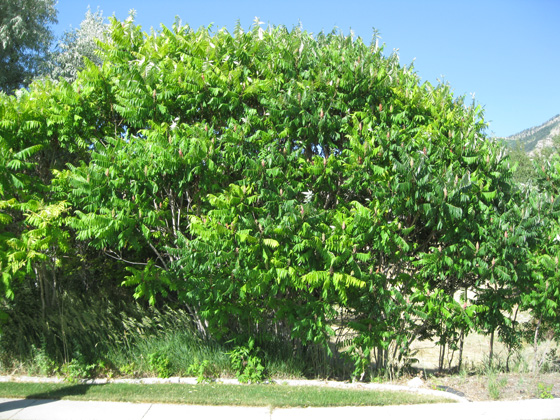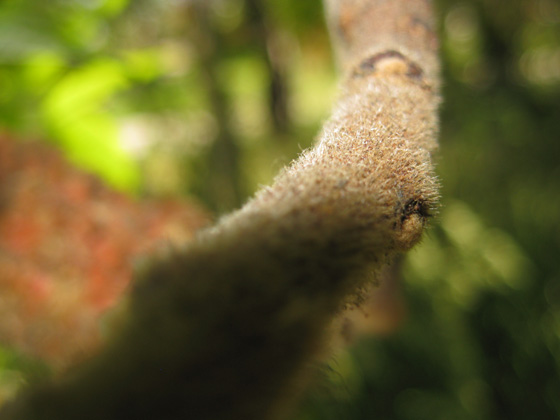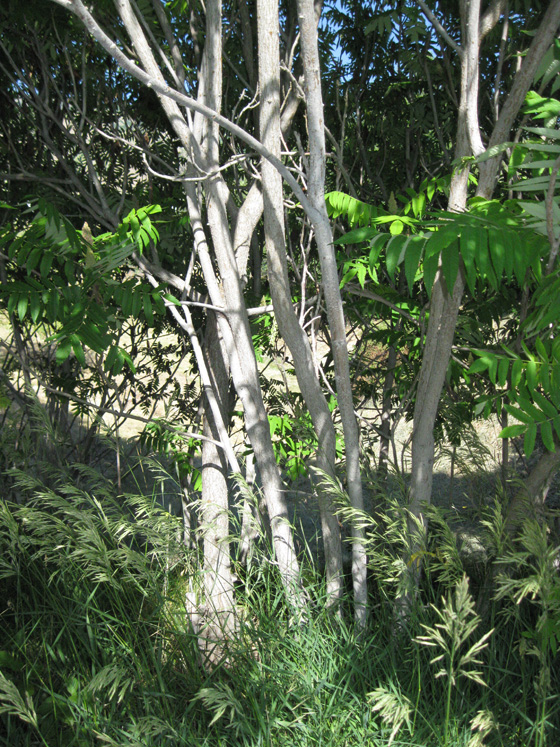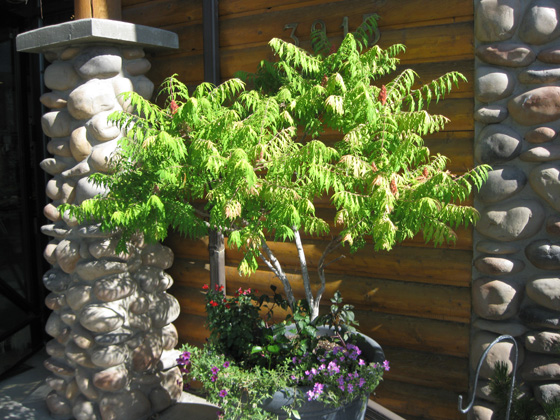| PSC 2620: Woody Trees and Shrub | Course Home | Week 3 |
Rhus typhina - Staghorn Sumac
Plant Viewer
 |
 |
| Sumac grows into a colony of large shrubs. | The new growth and young stems are highly pubescent. |
 |
 |
| Clusters of red drupe form in a conical form by summer. | Mature stems are light grey and are not pubescent. |
Plant Description
Rhus typhina is an extremely fast growing large shrub or small tree. Because of its suckering habit, it forms dense colonies of plants that will continue to spread as long as space is availabe. It is extremely drought tolerant and hardy, adapting to many different soil and moisture conditions. It grows best in full sun, but will readily make itself at home in a shady location as well.
Young stems are very pubescent, while the older stems are a light gray and hairless. The leaves are pinnately compound, arranged alternately on the stem, and can be up to 2 feet long. The leaflets are 2-4 inches long, lanceolate in shape with serrated edges. Sumac is famous for its fall color, one of its few redeeming qualities, which is a mixture of bright oranges and reds that is simply stunning.
Cream-colored flowers form in panicles in late spring, and are relatively showy. Large clusters of drupes form by summer time on female plants in a conical shape. The fruit is red and covered in little hairs, from whence the species earned the common name of Staghorn Sumac. The red fruit contrasts well against the green of the leaves and creates a good visual impact.
Landscape Use
Great for extremely harsh places, such as south or western-facing walls where there is a great deal of reflective heat. Use in mass plantings. If you are willing to continually remove the suckers, Rhus typhina will form an interesting multi-trunked tree suitable as a focal point. This species is very invasive, so plan accordingly.
Points of interest
Although susceptible to several different pests and diseases, Staghorn Sumac is so hardy and vigorous that most ailments have only a limited impact.
Notable Cultivars
Bailtiger (Tiger Eyes): Multi-colored cut leaves leaves set this variety apart from the species. New leaves are a lime green and then turn to yellow and the margin of the leaf often has red highlights. Excellent fall color. Reported to sucker less than the regular species.
